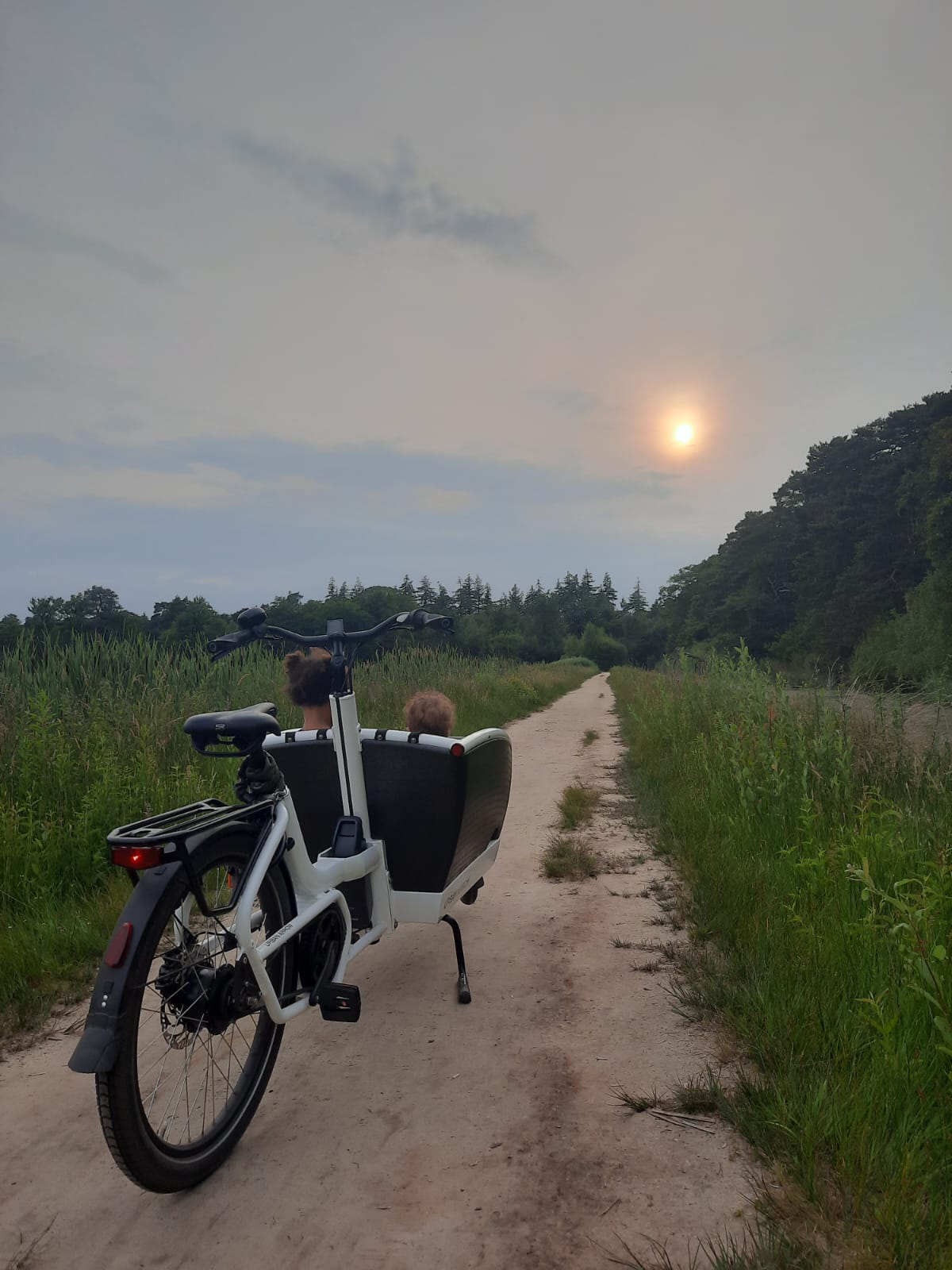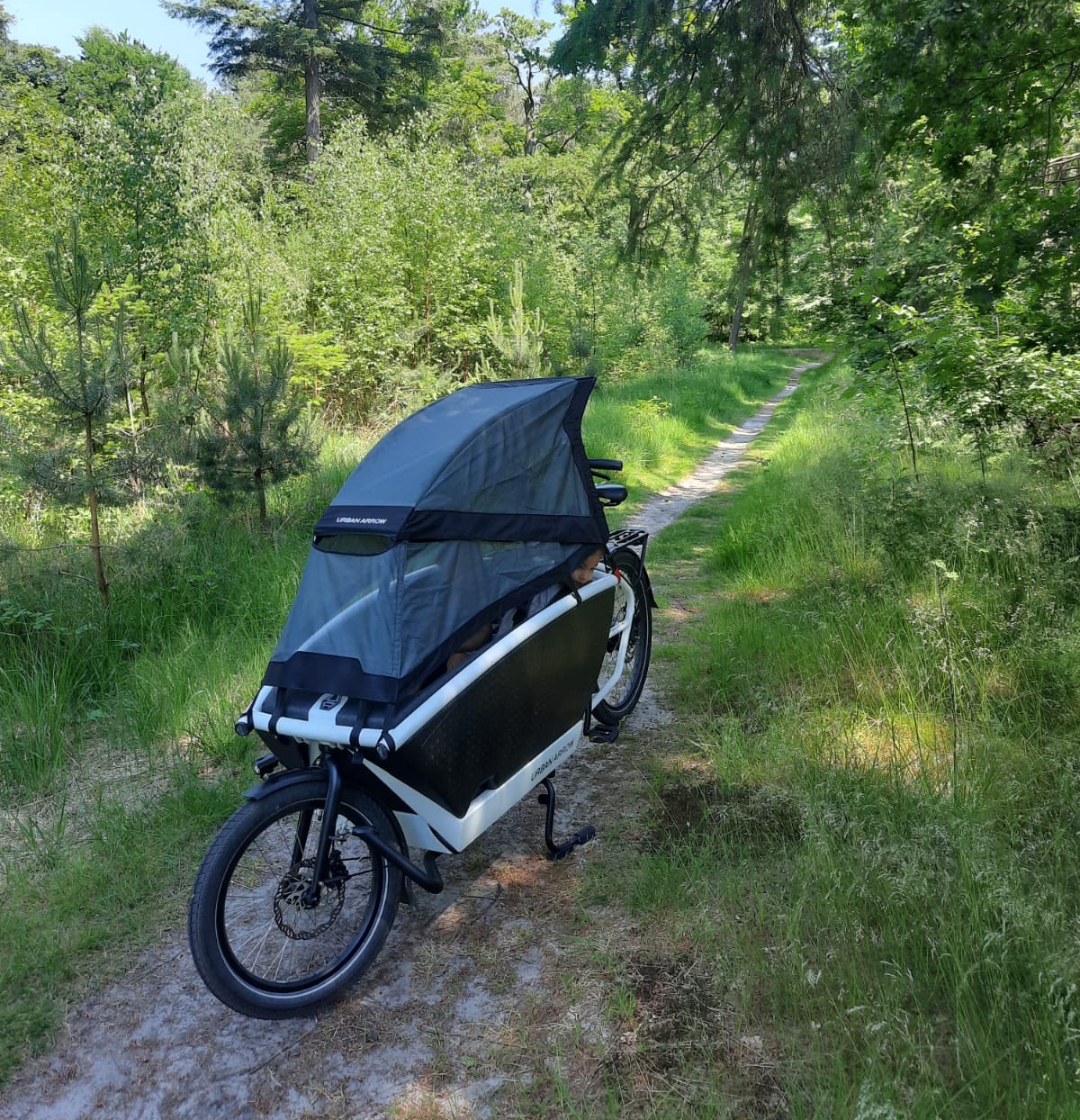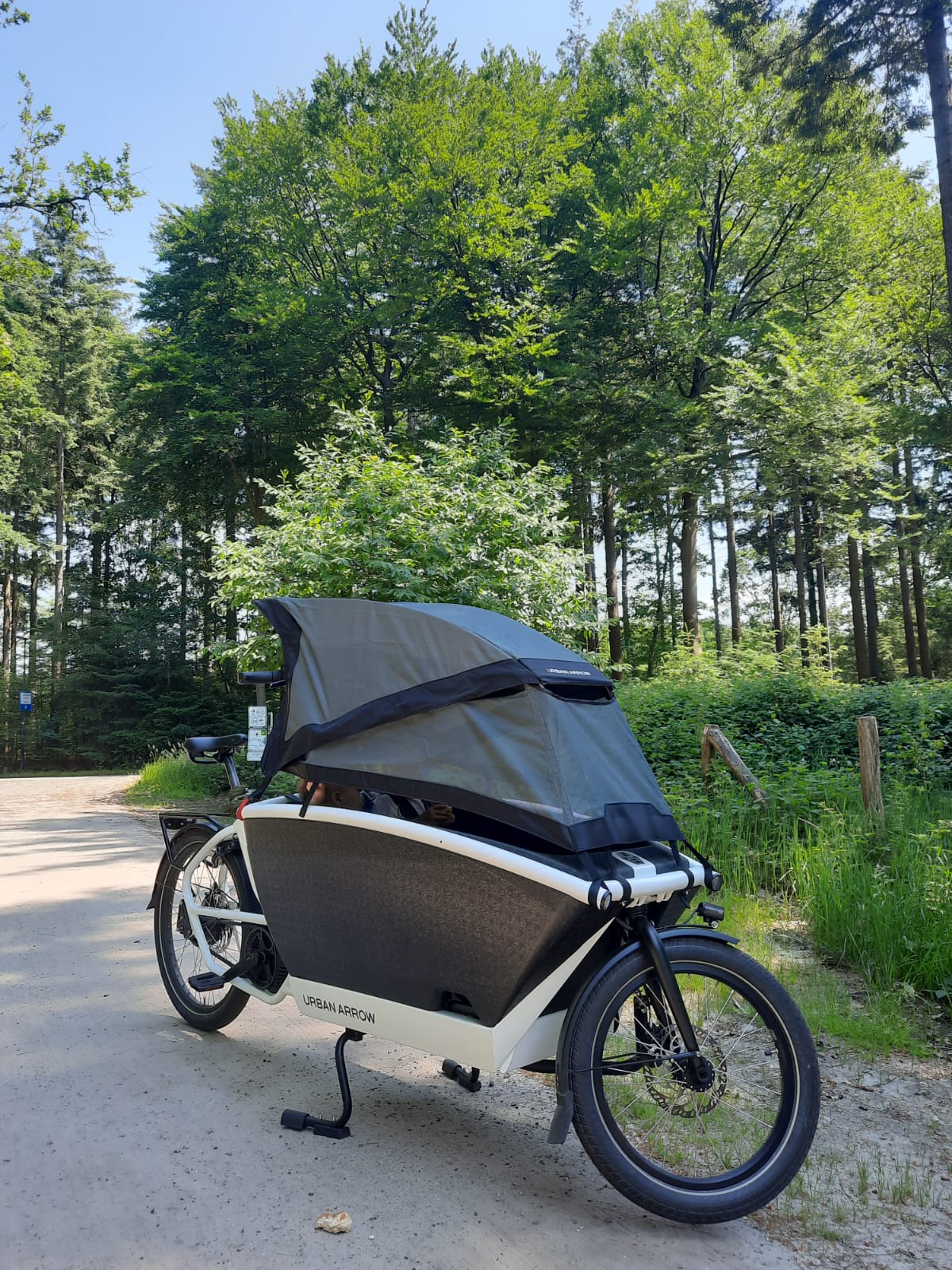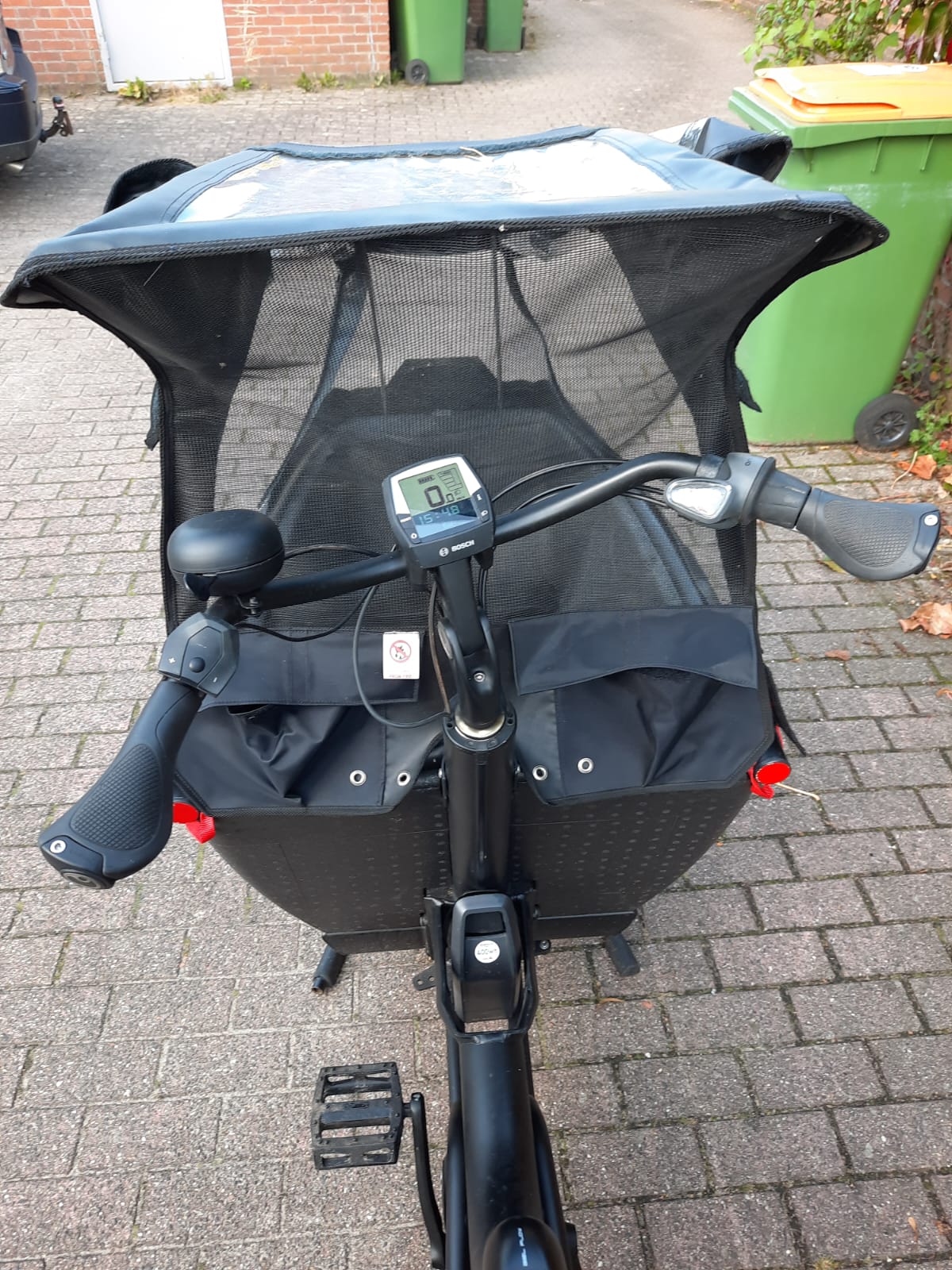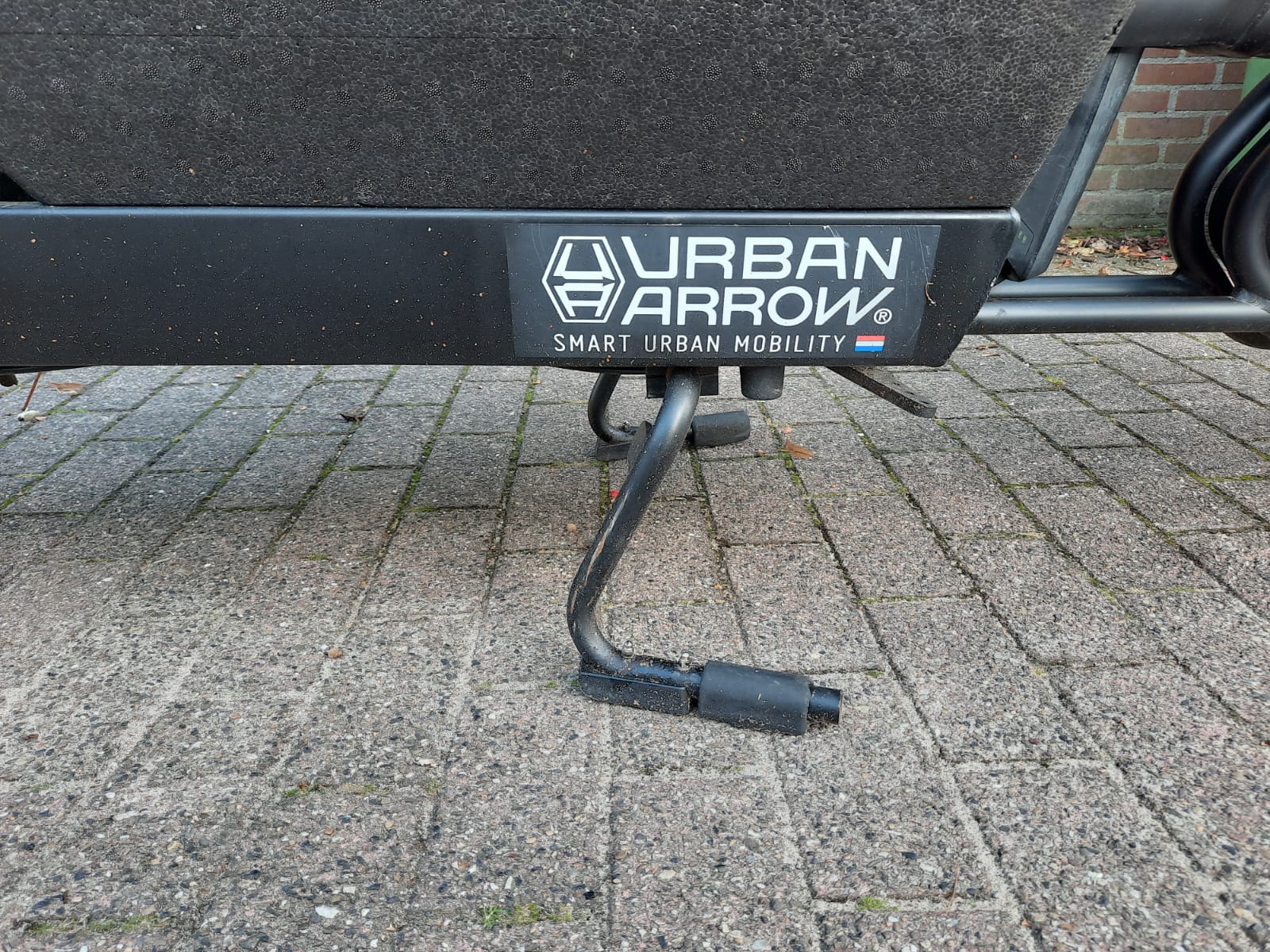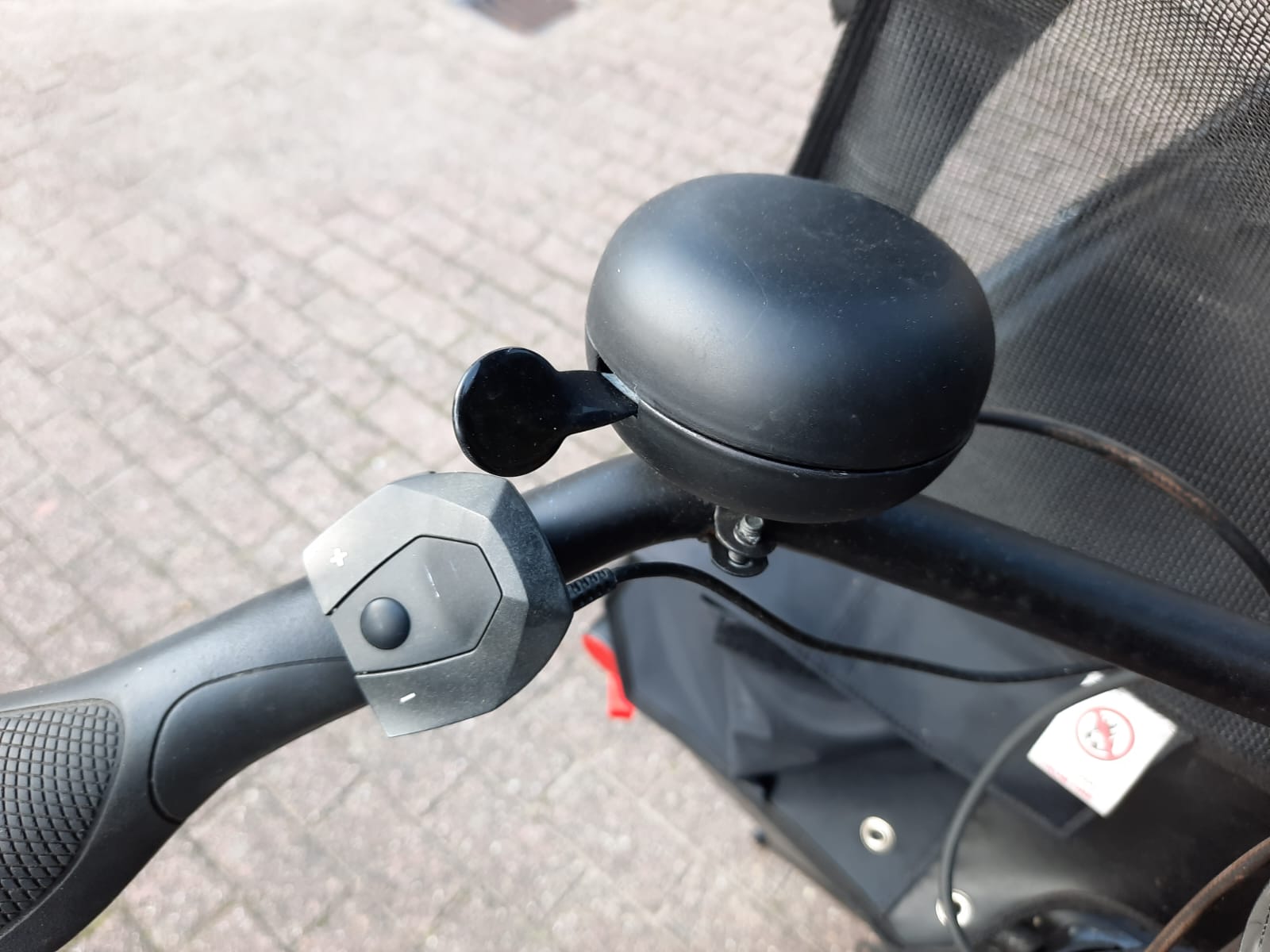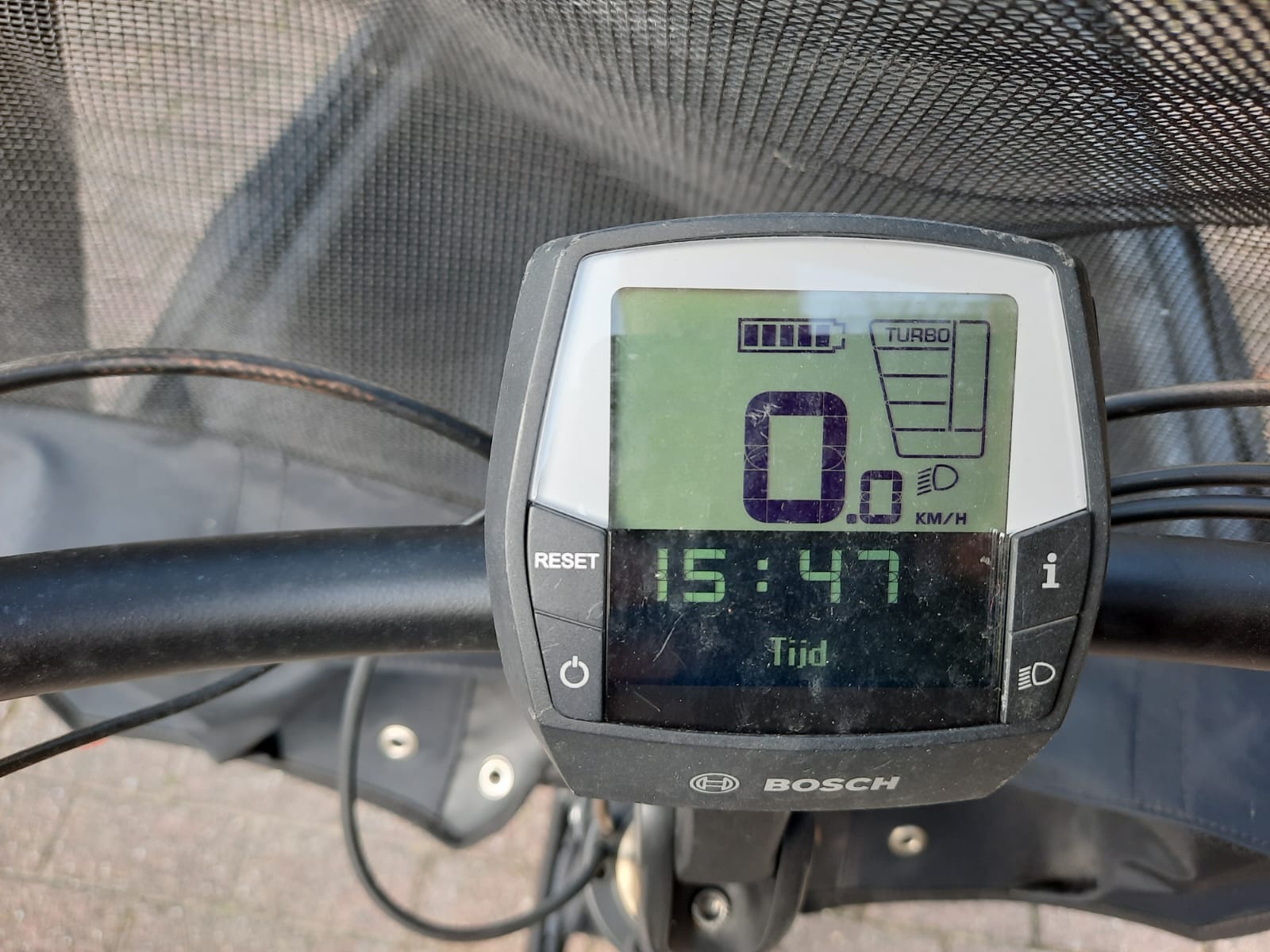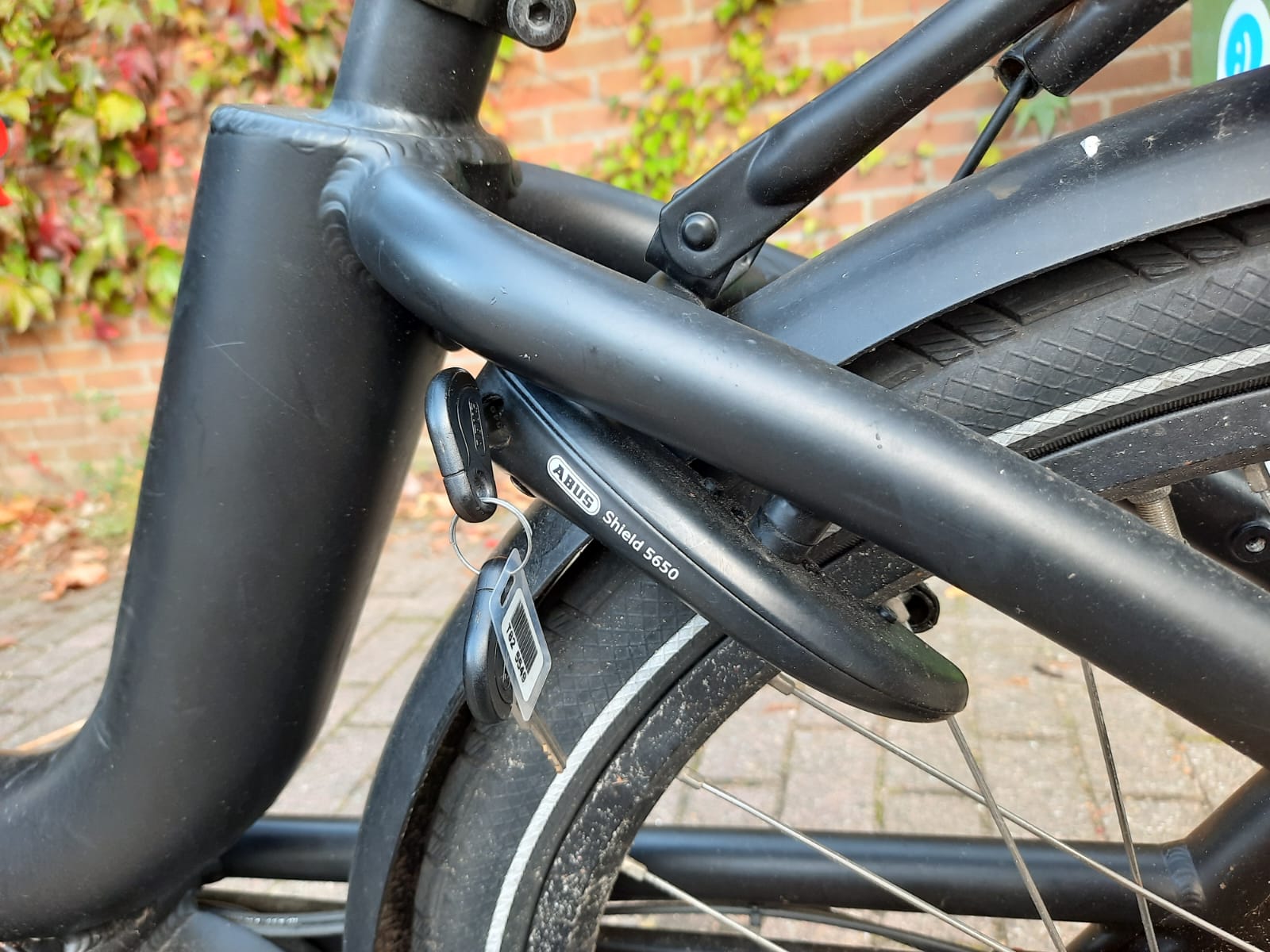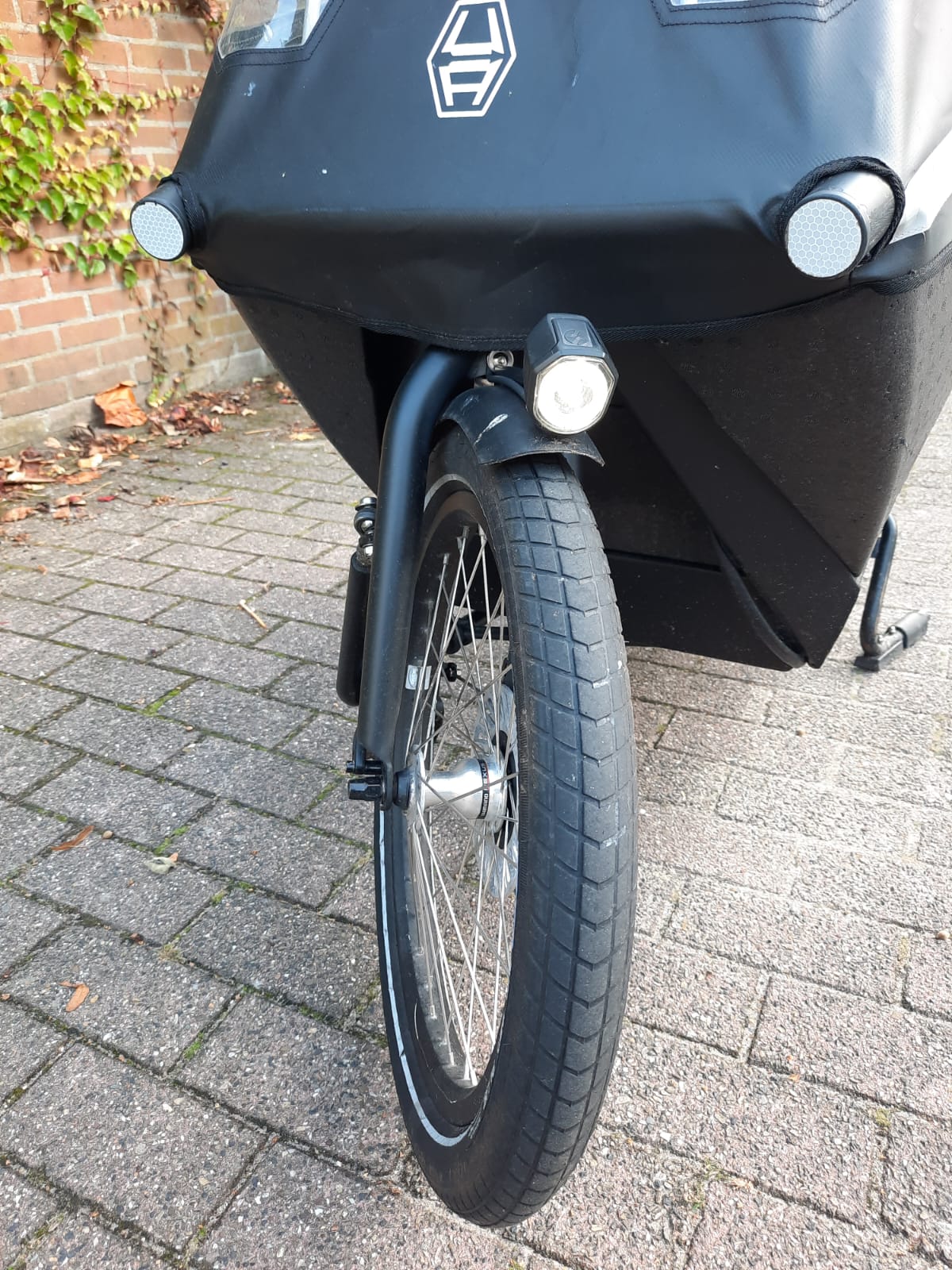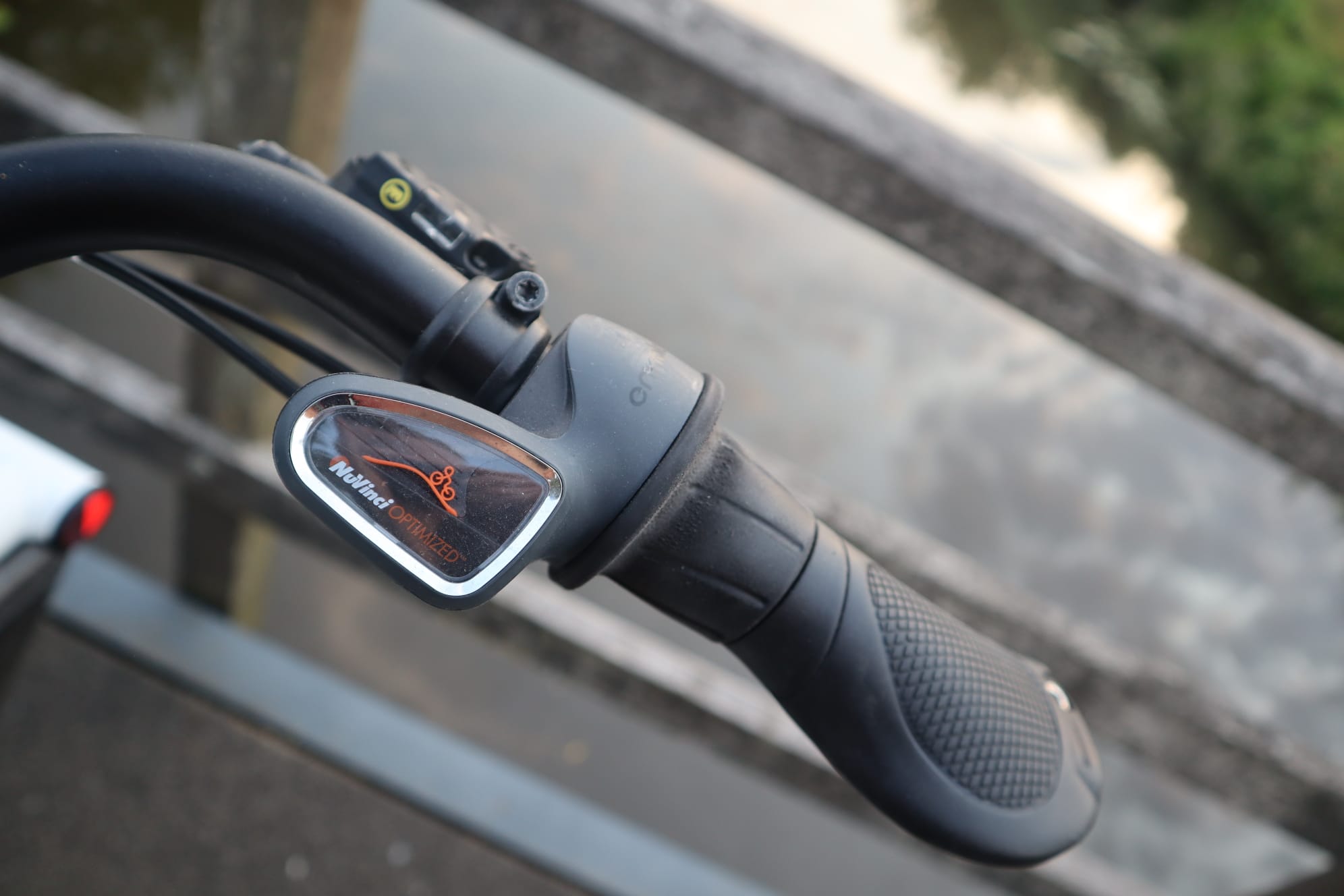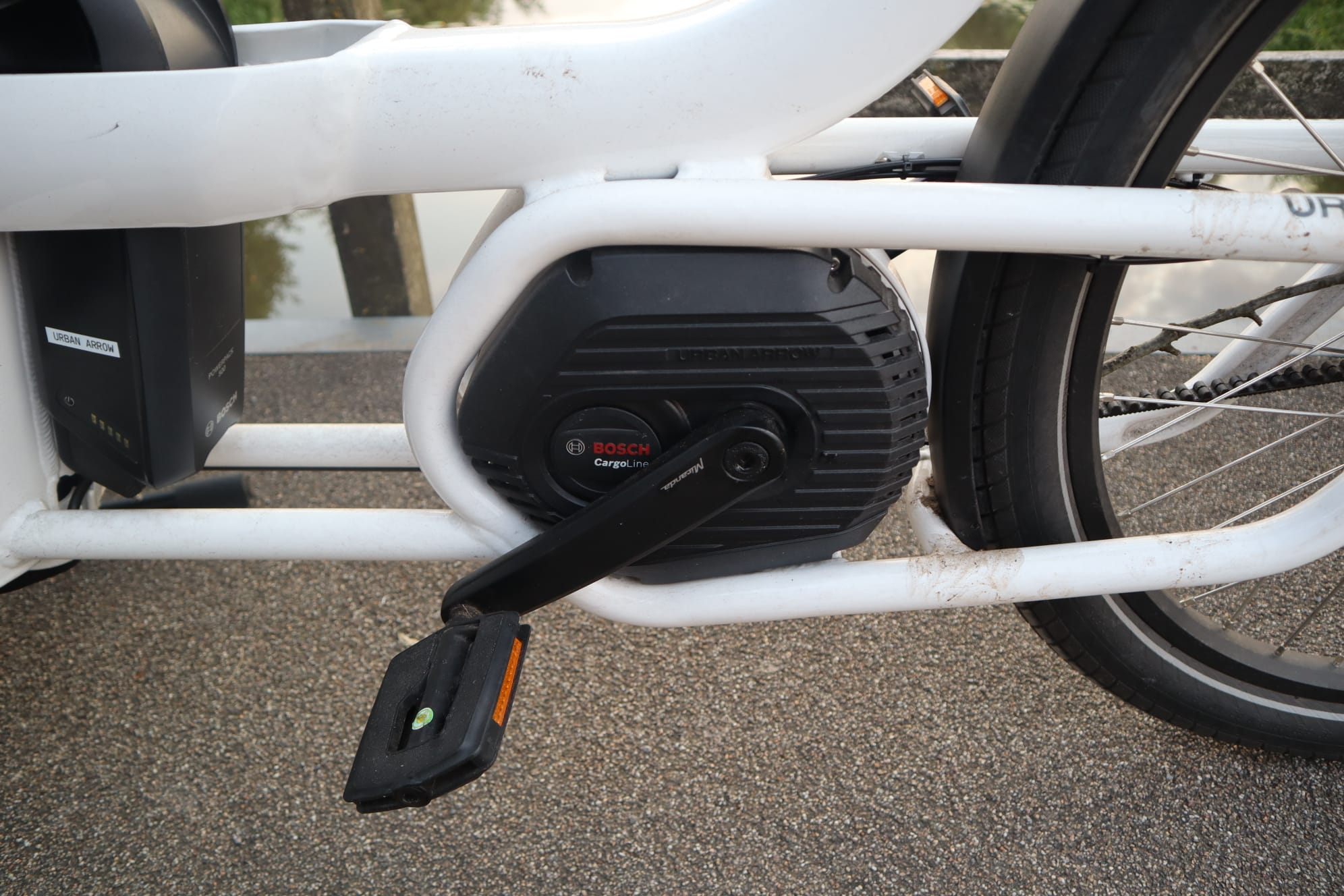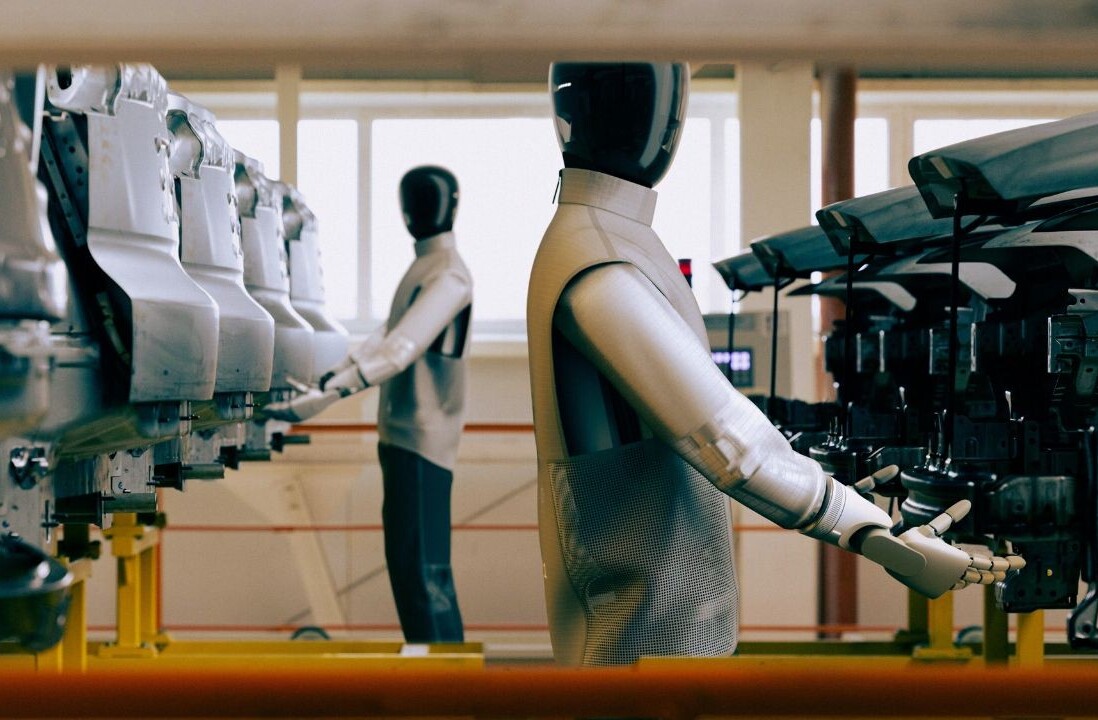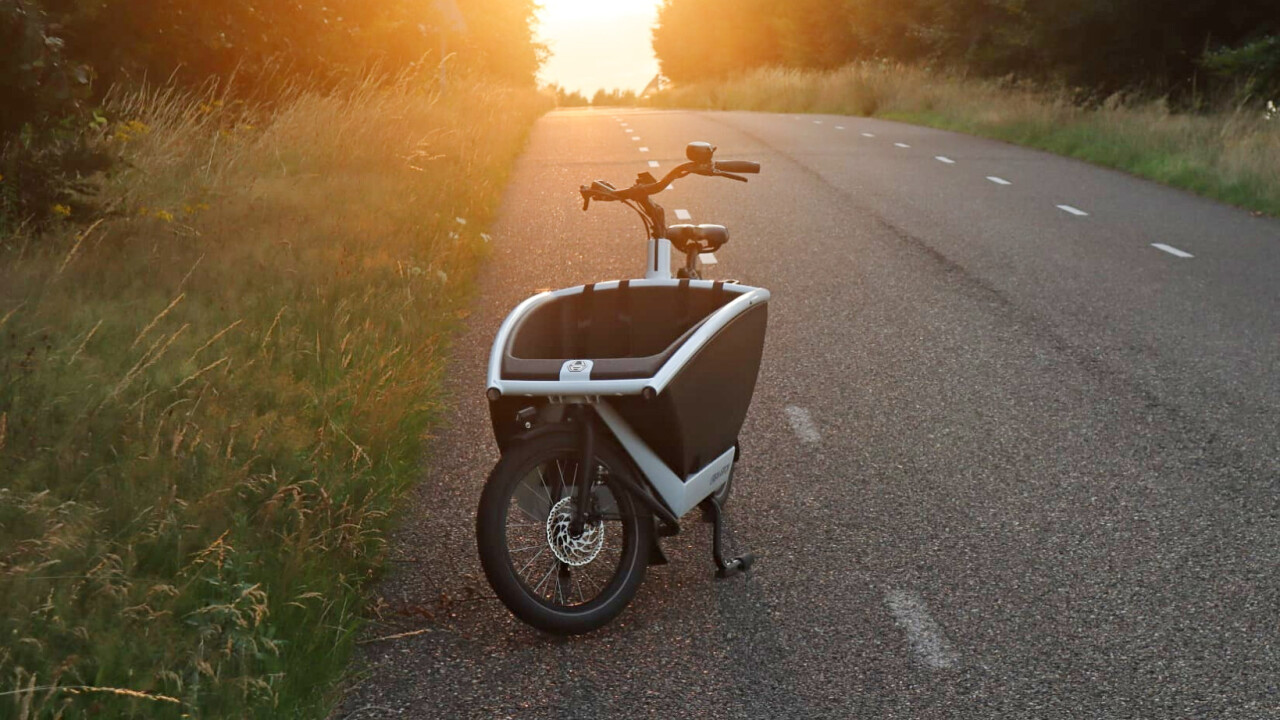
Tired of endless traffic jams, hefty bills, and the weight of climate guilt, city dwellers across Europe are ditching their cars for cargo bikes — and never looking back. Here’s why I became one of them.
Once the vehicle of choice for a select group of urban eco-geeks, cargo bikes are now rolling into the mainstream, helped in part by the rise of electric assist.
In many places, e-cargo bikes are simply a cleaner, greener, funner, cheaper, healthier, and, usually, faster way to transport yourself, your loved ones, and a bunch of stuff across the cityscape.
Growing up in South Africa, I had never seen, let alone ridden, a cargo bike before moving to the Netherlands earlier this year. So, curious to find out what all the fuss was about, I got in touch with one of the leading e-cargo bike brands, Urban Arrow, and they generously agreed to lend me one of their ‘Family’ models for a month. We loved it so much that at the end of the trial, we ended up buying our own and kicking our car to the curb.
Since then, I have cycled our ‘bakfiets’ (which translates to ‘box bike’ in Dutch) over 2000km across city streets, muddy forest paths, and sand tracks. Aside from the daily school run and trips to the supermarket, I’ve transported three bicycles stacked on top of each other, 120 kilograms of building materials, and a massive tree from the garden centre.
Now that I think of it, I have hauled more awkwardly-shaped items in the bakfiets (think lawnmower, wheelbarrow, cabinets, etc.) than I can recall. I’ve even given my mum, plus her two hefty suitcases, a lift to the train station to prevent her from missing her flight (you’re welcome!). And all of this, usually, with a smile on my face.

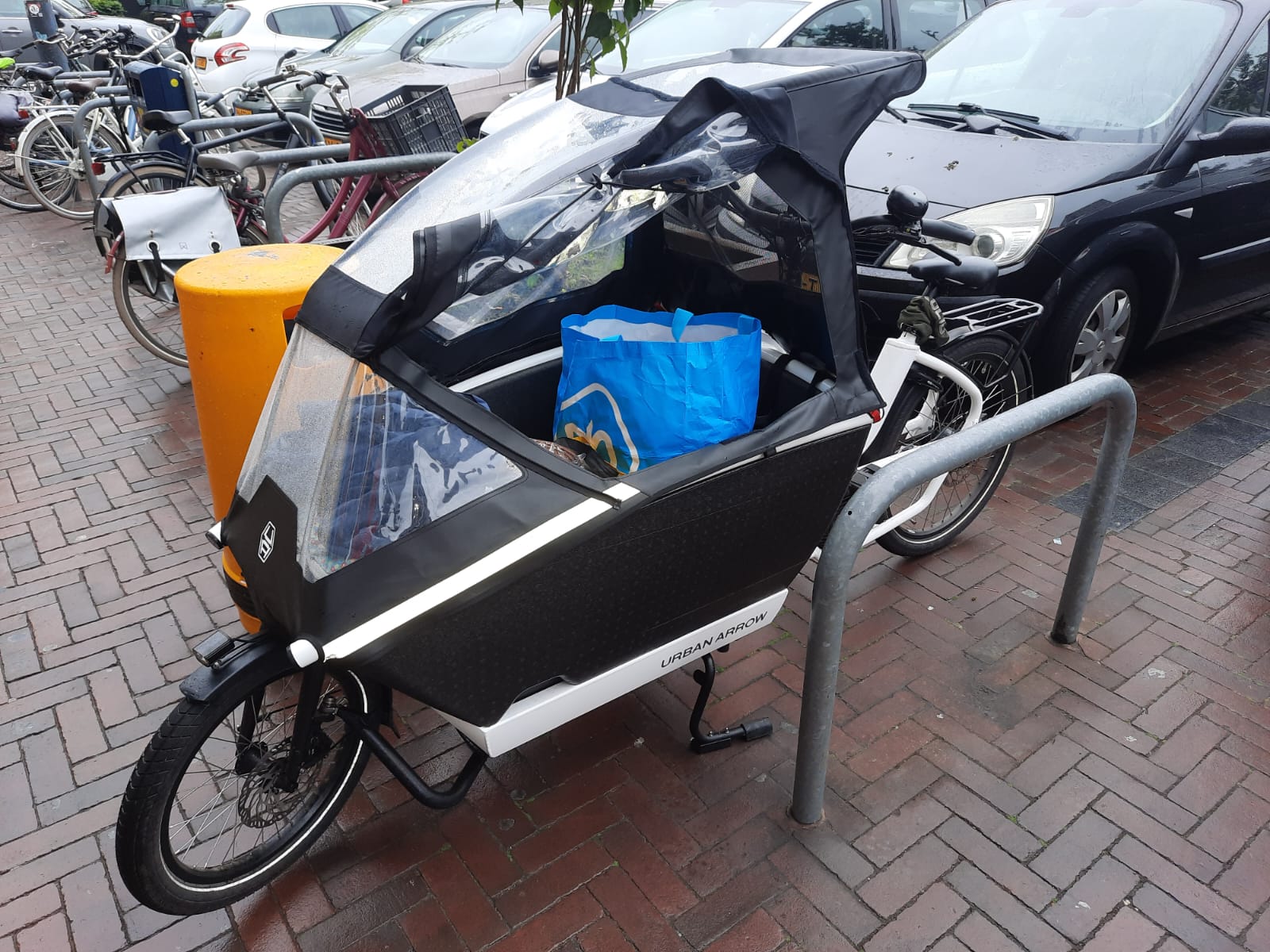
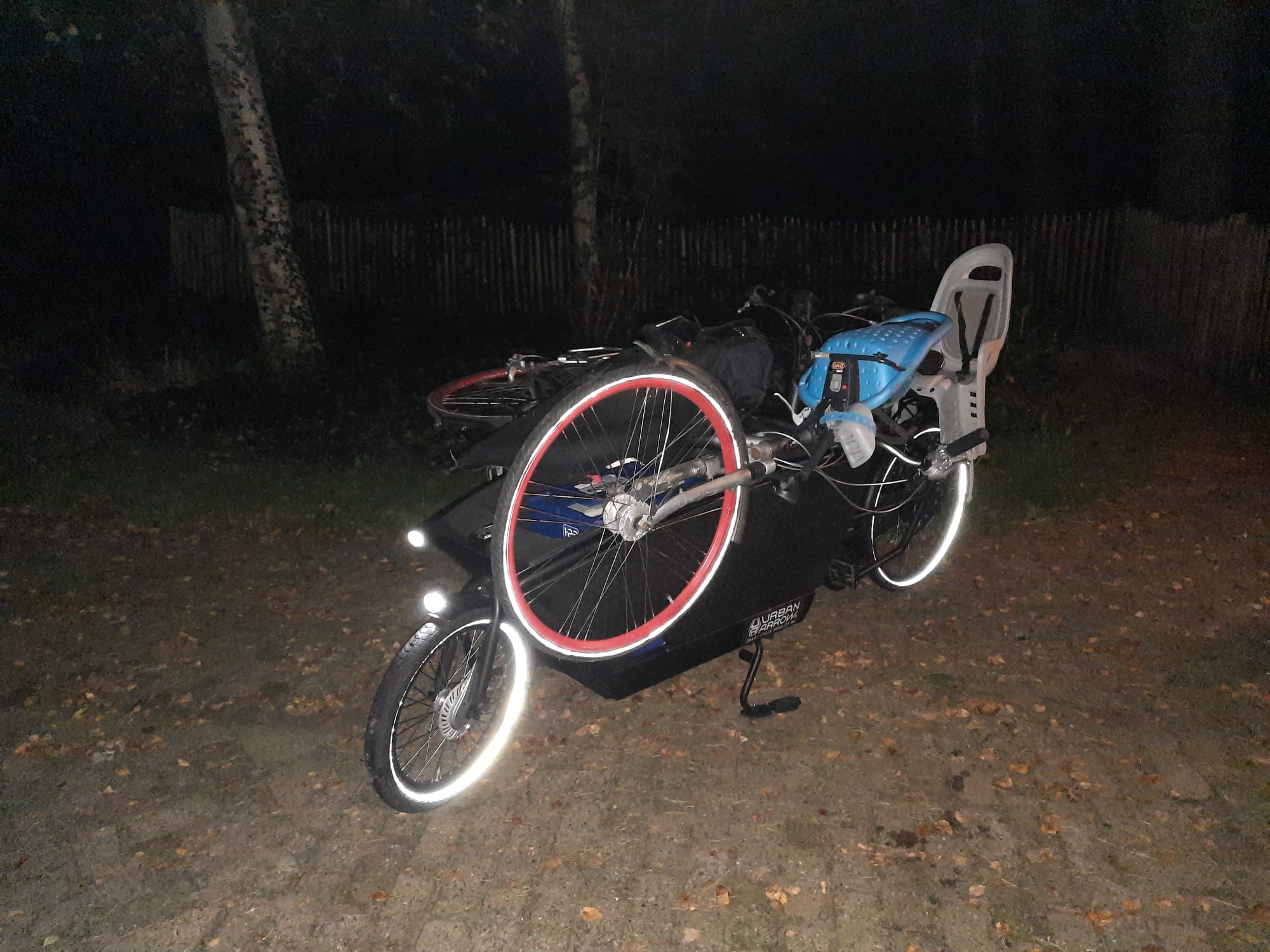
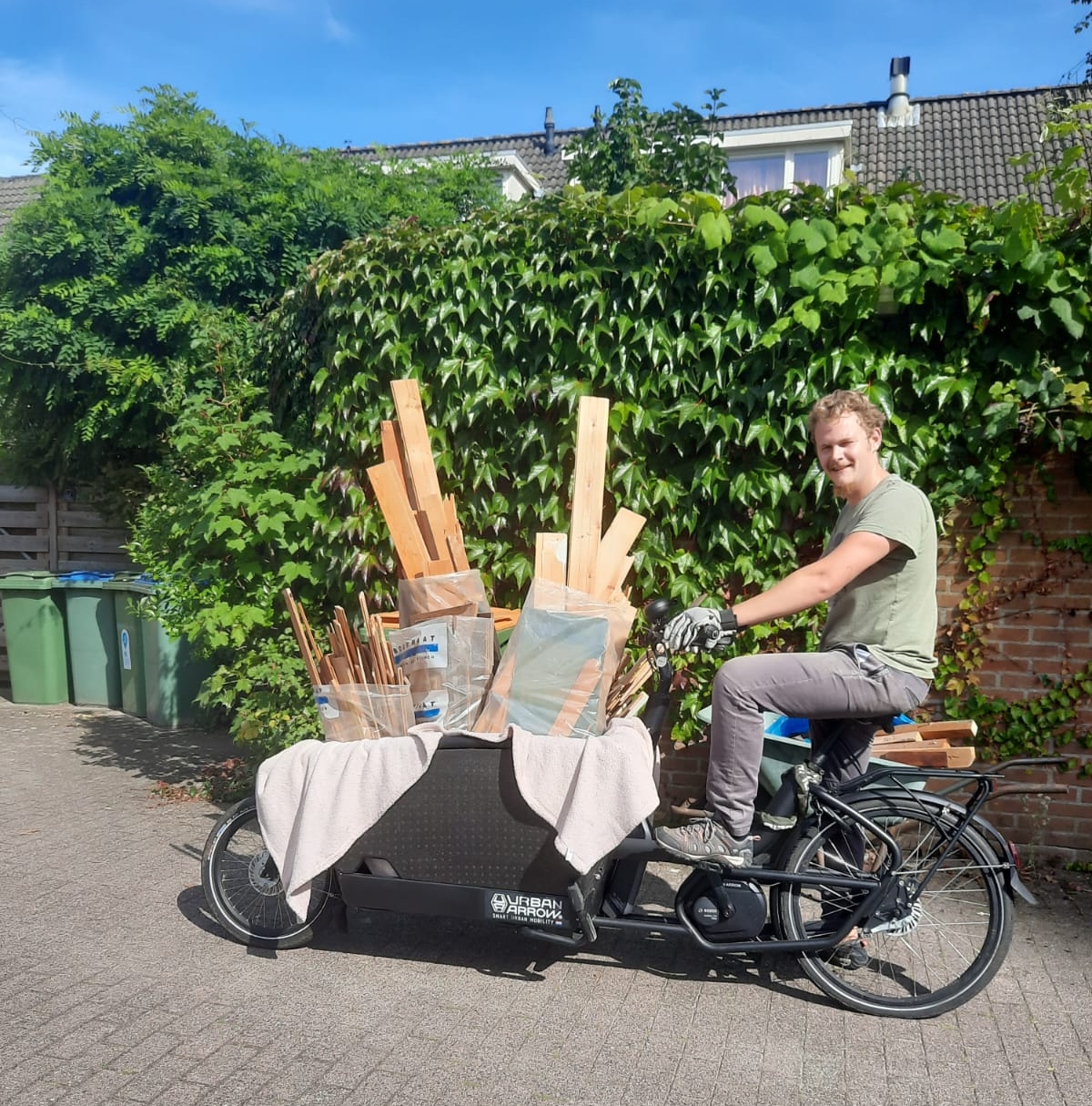
Enter the two-wheeled pickup truck
Cargo bikes are essentially any bike that can carry lots of stuff. They come in two main forms: the long-tail cargo bike, where goods and kids are transported on seats at the back of the bike, and the front-loader, where the cargo hold is slung out ahead of the rider. Front-loaders are often called referred to as ‘bakfiets’, even outside the Netherlands, and are in many ways the quintessential cargo bike.
Bakfietsen were first popularised in the Netherlands and Denmark in the 1930s and 40s for delivering milk, bread, and other goods throughout the city— a trend which spread across the world.
But in the 1960s, they practically disappeared.
The biggest culprit was the automobile. Faster, bigger, and hyper-fashionable, cars elbowed out practically all other forms of transport to become the top dogs of the city streets, leaving cargo bikes destined for the scrap yard.
But now, over half a century later, cargo bikes are making a comeback.
One of the biggest push factors has been the fact that our cities are getting cramped and polluted, with increasingly high costs of living. One of the biggest pull factors (getting people out of their cars and onto cargo bikes) has been the rise of electric assist.
With the help of an electric motor, cargo bikes become a whole lot easier and quicker to ride which makes them more practical. Add to that the sleek, lightweight, user-friendly design of modern-day cargo bikes and it’s easy to see why they are selling faster than traditional bikes and even other electric models.
In Germany, for instance, sales of e-cargo bikes skyrocketed from 37,000 in 2018 to 165,000 in 2022. The country is one of several that subsidise the cost of a cargo bike purchase.
While the Netherlands, Germany, and Denmark are undoubtedly leading the e-cargo bike charge, they are also taking off across Europe and further afield — from Ukraine to Uganda, and Nigeria to Canada.
Testament to their surging popularity, there is even an International Cargo Bike Festival that has grown from a small group of cycling nerds in the small Dutch city of Nijmegen to an event attended by thousands of people in the country’s capital Amsterdam.
“Our goal is to inspire the world to stop using cars and vans and instead start using cargo bikes. That’s why we’ve declared the 2020s the Decade of the Cargo Bike,” say the festival’s organisers Jos Sluijsmans and Tom Parr.
One of the first brands to lead the electric cargo bike revolution was Amsterdam-based Urban Arrow. The company was founded in 2010 by Jorrit Kreek and Gerald van Weel, two cargo bike dads who were tired of constantly arriving at their destination with sweaty shirts sticking to their backs.
The first prototype of the Urban Arrow ‘Family’ ebike was envisioned by industrial designer Wytze van Mansum, and upon release it immediately won a Eurobike award — and the rest, as they say, is history.
Urban Arrow sold over 10,000 units in 2019, which it claims makes it the world’s leading manufacturer of electric cargo bikes. Acquired by Dutch cycling conglomerate Pon four years back, the company has over 100 full-time employees and a worldwide network of more than 500 dealers.
The specs
The combination of a narrow, 2-wheeled base, strong Bosch motor, and a typically Dutch upright seating position makes the Urban Arrow surprisingly comfortable to ride, and nippy around town. The box is positioned very close to the ground giving the bike a low centre of gravity, making it surprisingly stable, even when carrying 125kg of cargo (max recommended capacity excluding the rider).
Once you get used to it it is just as easy as riding a normal bicycle, despite weighing 50kg and measuring 2.7 metres in length. The sheer size of the thing does take some getting used to, however, and often requires a not-so-elegant 3-point (or sometimes 10-point!) turn when parking.
The box is made from expanded polypropylene, the same material found on the inside of bicycle helmets. This envelopes your precious cargo with a soft cushion while making it significantly lighter than other cargo bike boxes, which are typically made from wood or plastic. However, it is easy to damage, so if you’re looking for a bike exclusively for hauling freight, it is probably best to check out some of the more heavy-duty options.
The Family has a very smooth Enviolo continuously variable transmission gear hub. Instead of click-shifting from one gear to another while in motion, you can turn the shifter when you’re at a standstill. This makes kicking off a heck of a lot easier, especially as the motor kicks in almost instantly after take-off.
The drivetrain has four levels of assistance, which you can toggle on a small Bosch Intuvia display. The screen also shows the odometer, lights, and battery level. It’s all very intuitive and simple to use. Most of the time I just use ‘Turbo’, the highest setting.
The entry-level model, the Active Line-plus, is powered by a mid-drive Bosch motor supplied by a 400Wh battery that puts out 50Nm of torque. This is enough power for most applications — if you live in a flat country like the Netherlands that is.
If you’re tackling hills or hauling heavy cargo on the regular I’d highly recommend going for the Performance Line (65Nm) or the Cargo Line (85Nm) models. These also come standard with a larger, 500Wh battery that boosts the range to an acceptable 50km.
Charge time for all the batteries from nearly zero is about 4 1/2 hours. I ran out of battery just once over the past 2000-odd kilometres of ride time. That was a huge bummer though, and not something I (or my calves) would like to repeat.
The Urban Arrow Family starts at €5,290 for the Active Line, €5,790 for the Performance, and €6,690 for the Cargo. That’s not including essential accessories like a raincover. This is the price of a small, second-hand car in most countries, and is a significant investment whichever way you slice it.
Whether you think that the investment is worth it or not is a deeply personal decision. But when weighing up the pros and cons, consider this: ditching your car (or second) for a cargo bike is a lifestyle change that can have a profoundly positive impact on the health, wealth, and well-being of you, your family, your city, and your planet.
A gamechanger
The bakfiets is no ordinary bicycle. It has the potential to be a car replacement, or at the very least a substitute for your second car. And once you make the initial outlay, the running costs are minuscule in comparison. (The average European forks out around €300 per month to run, maintain, and insure their vehicle).
Then there’s the fact that traversing the city by cargo bike is genuinely a lot of fun, especially in countries that have decent bicycle infrastructure. It forces you to travel at a slower pace, explore hidden parts of the city, and interact with the world around you in a more intimate way.
Even when doing the school run in the pouring rain, I find it hard to be grumpy when riding my cargo bike.
Cycling every day (which ditching your car for a cargo bike forces you to do) can work wonders for your physical health, too. During my one-month trial, I clocked up about 727km, which, according to Urban Arrow’s app, means I burnt an average of 200 calories per day. That’s more than the recommended daily amount of exercise to maintain a healthy heart, according to the John Hopkins Institute.
And then there’s the unequivocal fact that e-cargo bikes are better for the planet. Not only do they emit a fraction of the emissions during manufacture and operation as compared to other modes of transportation like cars, buses, and trains, cargo bikes also take up far less space. (Which makes it super easy to find parking, too).
How much space in our city is occupied by cars?
More than you imagined…https://t.co/0F3xBmk69n pic.twitter.com/p2ZYn0c4sM— Tim Welch (@TimFWelch) October 9, 2023
In the overcrowded cities of today — where cars are increasingly impractical, expensive, noisy, and polluting — it’s no wonder that leaders across Europe and the globe are pushing to make their cities more bike-friendly.
Nevertheless, these benefits are owed to all bicycles. What really sets cargo bikes apart is their sheer practicality. Many of the items I have carried simply wouldn’t have fit in my old hatchback, and they also get the job done faster in many cases. My usual school run in the car used to take an average of 34 minutes there and back, based on a months-worth of data I collated using the fitness tracking app Strava. The cargo bike did it on average in 29 minutes.
This echoes a study from climate charity Possible which found that electric cargo bikes deliver 60% faster than vans in urban centres, totting up higher average speeds and dropping off ten parcels an hour, compared to a van’s six.

Making the shift
Despite all the myriad benefits of ditching your car for an e-cargo bike, it can be a big adjustment.
Naturally, cargo bikes will not cover the same distances that a car can nor do they offer protection from the elements. They’re also a fair bit more expensive than a regular bicycle, and really big, which means you need somewhere secure to store them. For some, especially those who live in rural areas, they simply might not be a practical option.
And even for those who are a perfect fit for the cargo bike life, some will simply prefer cars. In a way, I understand the sentiment — cars ooze comfort and convenience and the “need” for one is pretty much baked into our collective consciousness.
But most of the time, I simply don’t miss my car. I feel lighter, and more agile navigating my way about town. My kids absolutely love it, and it’s comforting knowing that I am producing zero carbon emissions and making the city a more liveable place for everyone. Plus it saves you a tonne of cash.
Making the shift successfully is more than just buying a cargo bike, however, it’s about viewing mobility in a different way. It’s about changing lanes, shifting gears, taking life at a different pace. Above all, it’s about valuing the journey over the destination. But trust me, once you do it, you won’t look back, and if you really miss driving a car — just rent one instead!
Signed, your cargo bike convert.
Becoming a cargo biker can be a big adjustment. Here are my top 5 tips to ease the transition:
- Get proper rain gear — If you’re going to be using your bike a lot, in all seasons, get yourself a proper rain jacket, water-proof pants and gloves, and a solid pair of boots. You won’t regret it.
- Accessorise — Most cargo bike brands offer a tonne of accessories, some more essential than others. The ones you can’t do without in my opinion are a good raincover, a floor mat, and a rearer carrier (which allows you to mount another child seat or more bags for storage). Other options like a maxi-cosi adapter for a baby carseat, a spare battery, or an extra bench could also come in handy.
- Sign up for a car-sharing app — Hate to burst your bubble, but, especially if you have kids, you’re probably going to need a car sometime or another. But that doesn’t mean you need to own one. When we need to go on longer trips we usually hire one, borrow from a friend or family member, or make use of the many car sharing scheme in our area.
- Don’t forget to charge — If you do you’ll regret it, big time. Unlike a regular e-bike, cargo bikes are really heavy and you don’t want to be caught miles from home with a flat battery and have to cycle it back. Trust me.
- Beware crosswinds — Especially when you have the raincover on. Strong winds can hit the side of the cargo hold and push you into the road if you’re not careful. The best way to avoid this is to leave both sides of the cover a bit open so the wind can flow through.
Get the TNW newsletter
Get the most important tech news in your inbox each week.
